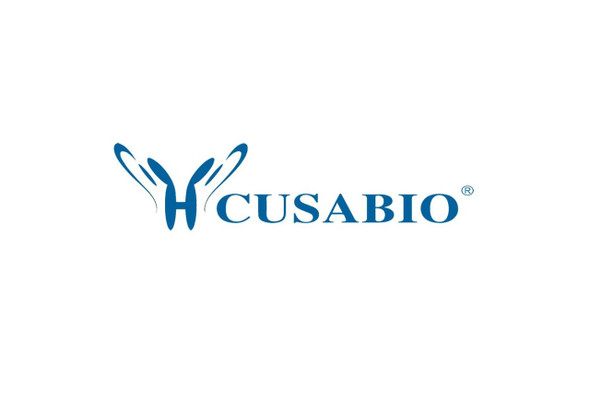Cusabio Rattus norvegicus Recombinants
Recombinant Rat Ribosyldihydronicotinamide dehydrogenase (Nqo2) | CSB-YP721470RA
- SKU:
- CSB-YP721470RA
- Availability:
- 25 - 35 Working Days
Description
Recombinant Rat Ribosyldihydronicotinamide dehydrogenase (Nqo2) | CSB-YP721470RA | Cusabio
Alternative Name(s): NRH dehydrogenase [quinone] 2NRH:quinone oxidoreductase 2Quinone reductase 2 ;QR2
Gene Names: Nqo2
Research Areas: Others
Organism: Rattus norvegicus (Rat)
AA Sequence: MAGKKVLLVYAHQEPKSFNGSMKQVAVEELSKQGCTVTVSDLYTMNFEPRATRNDVTGALSNPEVFKYGIEAYEAYKKKALTSDILEEQRKVQEADLVIFQFPLYWFSVPAILKGWMDRVLCQGFAFDVPGFYDSGFLKDKLALLSFTTGGTAEMYTKAGVNGDFRYFLWPLQHGTLHFCGFKVLAPQISFGPEVSSEEQRKVMLASWVQRLKSIWKEEPIHCTPSWYFQG
Source: Yeast
Tag Info: N-terminal 6xHis-tagged
Expression Region: 1-231aa
Sequence Info: Full Length
MW: 28.3 kDa
Purity: Greater than 90% as determined by SDS-PAGE.
Relevance: The enzyme apparently serves as a quinone reductase in connection with conjugation reactions of hydroquinones involved in detoxification pathways as well as in biosynthetic processes such as the vitamin K-dependent gamma-carboxylation of glutamate residues in prothrombin synthesis.
Reference: "Disruption of dihydronicotinamide riboside:quinone oxidoreductase 2 (NQO2) leads to myeloid hyperplasia of bone marrow and decreased sensitivity to menadione toxicity."Long D.J., Iskander K., Gaikwad A., Arin M., Roop D.R., Knox R., Barrios R., Jaiswal A.K.J. Biol. Chem. 277:46131-46139(2002)
Storage: The shelf life is related to many factors, storage state, buffer ingredients, storage temperature and the stability of the protein itself. Generally, the shelf life of liquid form is 6 months at -20?/-80?. The shelf life of lyophilized form is 12 months at -20?/-80?.
Notes: Repeated freezing and thawing is not recommended. Store working aliquots at 4? for up to one week.
Function: The enzyme apparently serves as a quinone reductase in connection with conjugation reactions of hydroquinones involved in detoxification pathways as well as in biosynthetic processes such as the vitamin K-dependent gamma-carboxylation of glutamate residues in prothrombin synthesis.
Involvement in disease:
Subcellular Location: Cytoplasm
Protein Families: NAD(P)H dehydrogenase (quinone) family
Tissue Specificity:
Paythway:
Form: Liquid or Lyophilized powder
Buffer: If the delivery form is liquid, the default storage buffer is Tris/PBS-based buffer, 5%-50% glycerol. If the delivery form is lyophilized powder, the buffer before lyophilization is Tris/PBS-based buffer, 6% Trehalose, pH 8.0.
Reconstitution: We recommend that this vial be briefly centrifuged prior to opening to bring the contents to the bottom. Please reconstitute protein in deionized sterile water to a concentration of 0.1-1.0 mg/mL.We recommend to add 5-50% of glycerol (final concentration) and aliquot for long-term storage at -20?/-80?. Our default final concentration of glycerol is 50%. Customers could use it as reference.
Uniprot ID: Q6AY80
HGNC Database Link: N/A
UniGene Database Link: UniGene
KEGG Database Link: KEGG
STRING Database Link: STRING
OMIM Database Link: N/A





![Recombinant Rat Ribosyldihydronicotinamide dehydrogenase [quinone] (Nqo2) Recombinant Rat Ribosyldihydronicotinamide dehydrogenase [quinone] (Nqo2)](https://cdn11.bigcommerce.com/s-rvypo0hmzw/images/stencil/590x590/products/5270/9841/cusabio__81676.1638370075__74202.1638525858.jpg?c=1)
![Recombinant Mouse Ribosyldihydronicotinamide dehydrogenase [quinone] (Nqo2) Recombinant Mouse Ribosyldihydronicotinamide dehydrogenase [quinone] (Nqo2)](https://cdn11.bigcommerce.com/s-rvypo0hmzw/images/stencil/590x590/products/8385/15751/cusabio__81676.1638370075__34921.1638527596.jpg?c=1)
![Recombinant Mouse Ribosyldihydronicotinamide dehydrogenase [quinone] (Nqo2) Recombinant Mouse Ribosyldihydronicotinamide dehydrogenase [quinone] (Nqo2)](https://cdn11.bigcommerce.com/s-rvypo0hmzw/images/stencil/590x590/products/6141/11488/cusabio__81676.1638370075__20908.1638526346.jpg?c=1)

